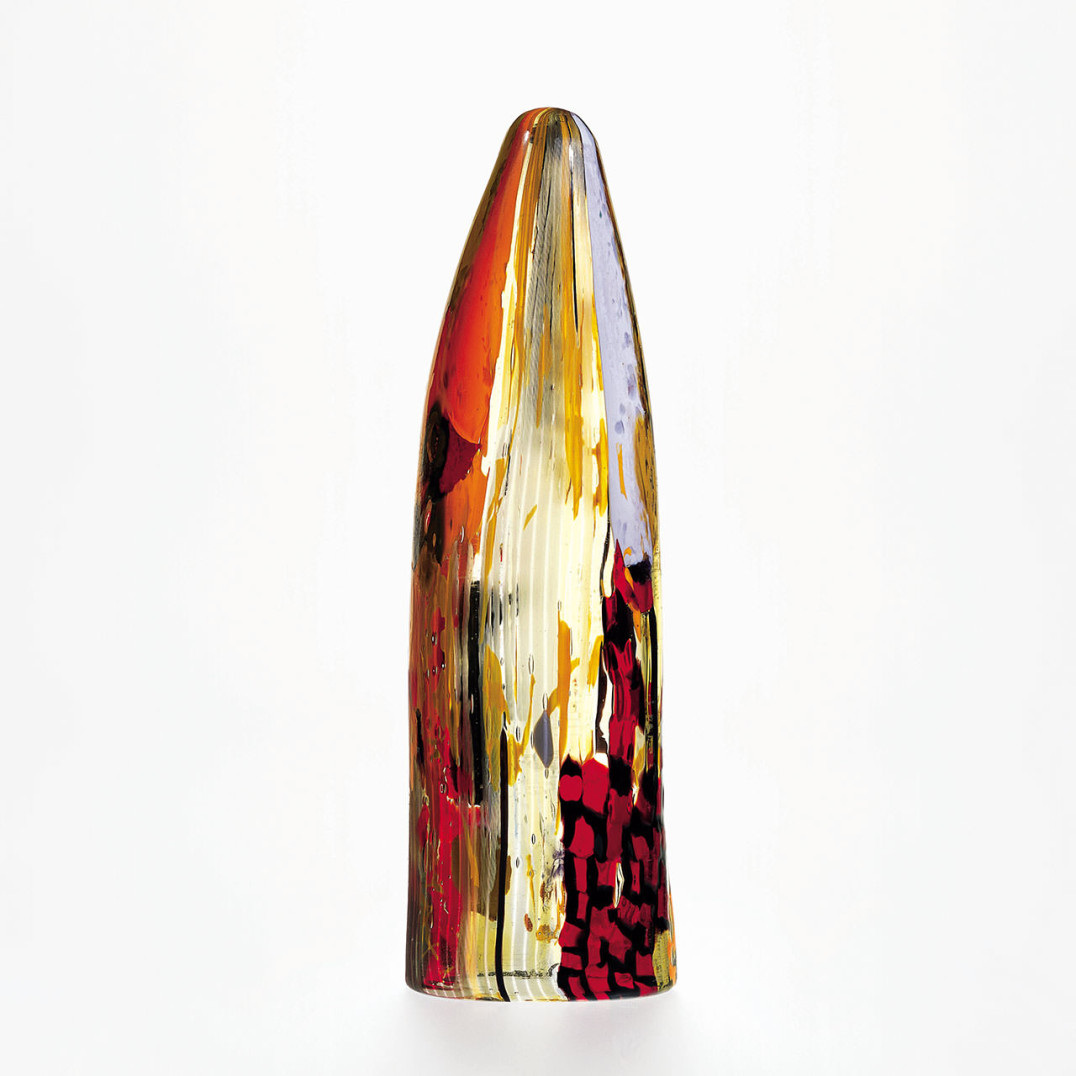
Thomas StearnsLa sentinella di Venezia, 1962

Thomas StearnsLa sentinella di VeneziaVenini & C., 1962
Multicolored glass sculpture composed of iridescent glass canes, murrine and vertical inciso work. One of three made. One was destroyed. Only two remain.
Engraved: 62 Venini Sentinella di Venezia version # 1.
20 7/16 in. high (52 cm)
Exhibitions:
1962, Venice, 31st Biennale Internazionale d’Arte;
2000, New York, Venetian Glass, Museum of Arts & Design;
2001, Milan, Murano: Vetri dalla Collezione Olnick Spanu, Spazio Oberdan.
Bibliography and comparative texts:
M. Karasik, 1989, n. 55;
Olnick Spanu, 2000, n. 140;
Olnick Spanu, 2001, n. 177.
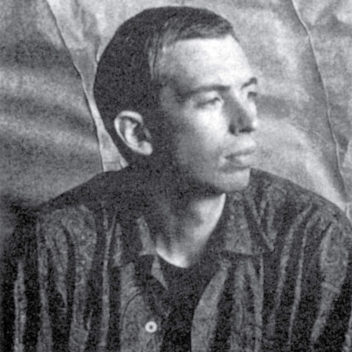
Thomas Stearns 1936–2006
Thomas Stearns was born in the United States on September 4, 1936, in Oklahoma City. From 1955 to 1957, he left his hometown to study painting at the Memphis Academy of Art. Between 1957 and 1959 he attended the prestigious Cranbrook Academy of Art and received a postgraduate Fulbright Travel Grant for Italy. He was 24 years old when he arrived at Venini. He started working after Christmas 1959 and stayed with the firm all of 1960 as well as 1961. He left Venice at the end of November 1962, and shortly thereafter the Victoria & Albert Museum in London ordered a group of his works produced by Venini. In 1964, he had his first exhibition of sculpture at the Willard Gallery in New York. In 1965, he was awarded a Guggenheim Fellowship for Sculpture and a grant from the National Institute of Arts and Letters. In 1968, he had a one-man show called Constructions at the Ringling Museum of Art in Sarasota, Florida. In 1970, Stearns began teaching at the University of the Arts, Philadelphia, where he was an associate professor in the sculpture department.

Venini & C. 1932–2001
In 1932, when both Martinuzzi and Zecchin left the company, Paolo Venini changed the name from Vetri Soffiati Muranesi Venini & Co. (V.S.M. Venini & Co.) to Venini & C.. Milanese architect Tommaso Buzzi became the new artistic director. After 1934, artistic direction was taken on by Carlo Scarpa, who designed most of the company's production through 1947. Side by side with Venini, who often intervened personally in design, Scarpa created numerous collections of objects characterized by refined colors. After World War II, Venini & C. sought numerous collaborations with artists such as architect Giò Ponti and the Swedish-born Tyra Lundgren. After 1948, Fulvio Bianconi, Massimo Vignelli, and Tobia Scarpa contributed significantly to the new direction of the company. Paolo Venini died in 1959 and his son-in-law, Ludovico Diaz de Santillana, took over the management of Venini & C. He not only worked personally as a glass designer but also continued the collaboration started by Paolo Venini with various artists and designers. Starting in 1960, many other designers collaborated with the company, like Thomas Stearns, Toni Zuccheri, Tapio Wirkkala, Laura and Alessandro Diaz de Santillana, James Carpenter, Dan Dailey, Richard Marquis, Benjamin Moore, and Toots Zynsky. In 1986, the de Santillana family left the company, selling their stock to the Ferruzzi group, which guaranteed the fine quality Venini was known for by hiring new designers such as Timo Sarpaneva, Marco Zanini, Ettore Sottsass Jr., Alessandro Mendini, Mario Bellini, Barbara del Vicario, and others. In 1988, Venini was acquired by Royal Scandinavian. Since 2001, Venini S.p.A. has been part of Italian Luxury Industries Group and is led by Giancarlo Chimento, Giuliano Tabacchi, and Giorgio Rizzo.
Thomas StearnsLa sentinella di Venezia, 1962
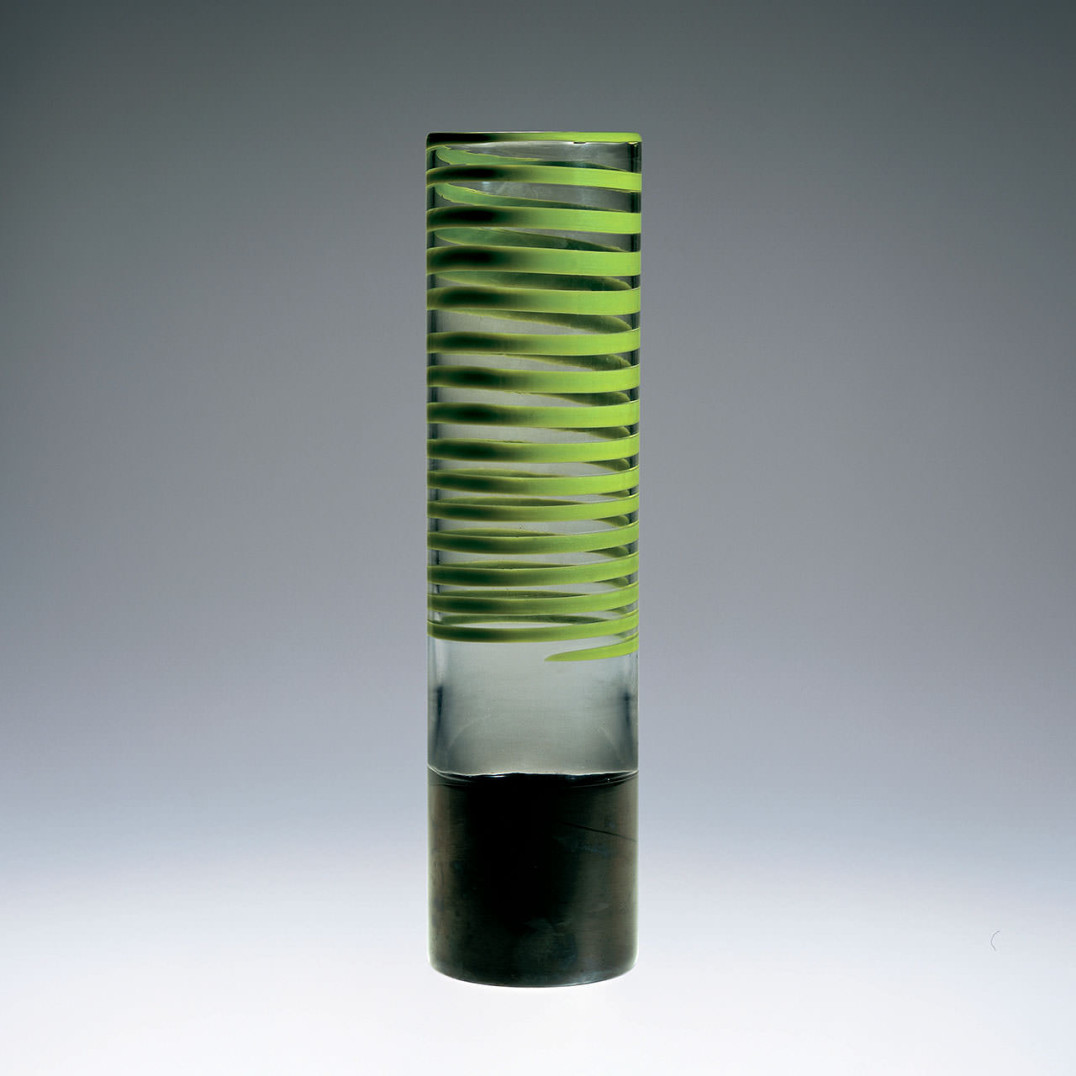
Thomas StearnsSpiralato (Thomas), 1961
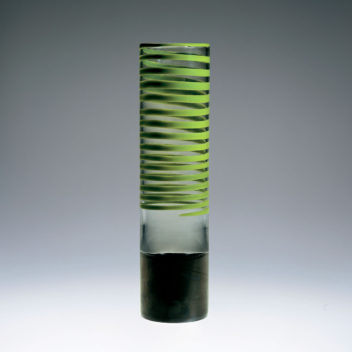
Thomas StearnsSpiralato (Thomas)Venini & C., 1961
Vase obtained with the incalmo technique. The lower part is made of black glass and the top portion is made in cristallo glass with an applied spiral of green glass.
Acid stamped:
venini murano ITALIA.
15 1/8 in. high (38.7 cm)
Exhibitions:
1962, Venice, 31st Biennale Internazionale d’Arte;
2001, Milan, Murano: Vetri dalla Collezione Olnick Spanu, Spazio Oberdan.
Bibliography and comparative texts:
Venini, red catalogue, n. 8631;
Domus, 1962, November, advertising pamphlet;
The Venetians…, p. 48;
F. Deboni, 1989, n. 171;
M. Heiremans, 1993, n. 244;
F. Deboni, 1996, n. 229;
M. Heiremans, 1996, n. 207;
A. Bettagno, 1996, n. 222;
Venini Venezia…, p. 75;
M. Barovier, 1999, p. 267;
Venini, catalogue…, n. 189;
Olnick Spanu, 2001, n. 176;
A. Dorigato, 2002, p. 345.

Thomas Stearns 1936–2006
Thomas Stearns was born in the United States on September 4, 1936, in Oklahoma City. From 1955 to 1957, he left his hometown to study painting at the Memphis Academy of Art. Between 1957 and 1959 he attended the prestigious Cranbrook Academy of Art and received a postgraduate Fulbright Travel Grant for Italy. He was 24 years old when he arrived at Venini. He started working after Christmas 1959 and stayed with the firm all of 1960 as well as 1961. He left Venice at the end of November 1962, and shortly thereafter the Victoria & Albert Museum in London ordered a group of his works produced by Venini. In 1964, he had his first exhibition of sculpture at the Willard Gallery in New York. In 1965, he was awarded a Guggenheim Fellowship for Sculpture and a grant from the National Institute of Arts and Letters. In 1968, he had a one-man show called Constructions at the Ringling Museum of Art in Sarasota, Florida. In 1970, Stearns began teaching at the University of the Arts, Philadelphia, where he was an associate professor in the sculpture department.

Venini & C. 1932–2001
In 1932, when both Martinuzzi and Zecchin left the company, Paolo Venini changed the name from Vetri Soffiati Muranesi Venini & Co. (V.S.M. Venini & Co.) to Venini & C.. Milanese architect Tommaso Buzzi became the new artistic director. After 1934, artistic direction was taken on by Carlo Scarpa, who designed most of the company's production through 1947. Side by side with Venini, who often intervened personally in design, Scarpa created numerous collections of objects characterized by refined colors. After World War II, Venini & C. sought numerous collaborations with artists such as architect Giò Ponti and the Swedish-born Tyra Lundgren. After 1948, Fulvio Bianconi, Massimo Vignelli, and Tobia Scarpa contributed significantly to the new direction of the company. Paolo Venini died in 1959 and his son-in-law, Ludovico Diaz de Santillana, took over the management of Venini & C. He not only worked personally as a glass designer but also continued the collaboration started by Paolo Venini with various artists and designers. Starting in 1960, many other designers collaborated with the company, like Thomas Stearns, Toni Zuccheri, Tapio Wirkkala, Laura and Alessandro Diaz de Santillana, James Carpenter, Dan Dailey, Richard Marquis, Benjamin Moore, and Toots Zynsky. In 1986, the de Santillana family left the company, selling their stock to the Ferruzzi group, which guaranteed the fine quality Venini was known for by hiring new designers such as Timo Sarpaneva, Marco Zanini, Ettore Sottsass Jr., Alessandro Mendini, Mario Bellini, Barbara del Vicario, and others. In 1988, Venini was acquired by Royal Scandinavian. Since 2001, Venini S.p.A. has been part of Italian Luxury Industries Group and is led by Giancarlo Chimento, Giuliano Tabacchi, and Giorgio Rizzo.
Thomas StearnsSpiralato (Thomas), 1961
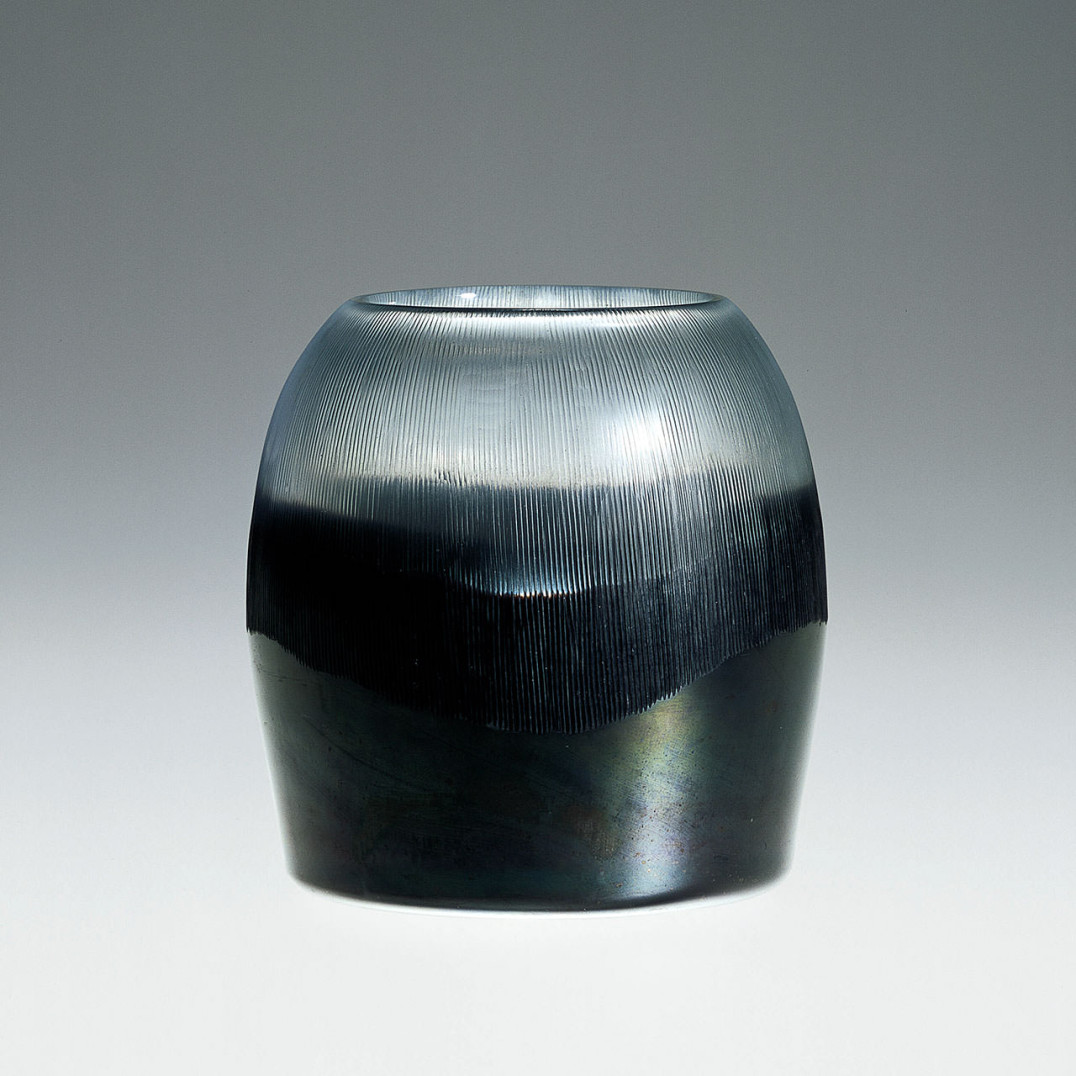
Thomas StearnsNebbia lunare, 1962
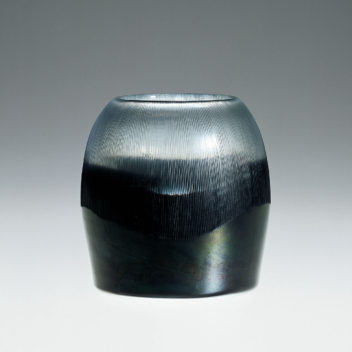
Thomas StearnsNebbia lunareVenini & C., 1962
Vessel in transparent glass. The lower portion is cased in heavily iridized dark blue glass. The top portion is made in clear glass and is inciso with fine vertical incisions.
The two portions are separated by a band of asymmetrical inciso glass.
Acid stamped:
venini murano ITALIA.
4 1/2 in. high (11.4 cm)
Exhibitions:
2000, New York, Venetian Glass, Museum of Arts & Design;
2001, Milan, Murano: Vetri dalla Collezione Olnick Spanu, Spazio Oberdan.
Bibliography and comparative texts:
Domus, 1963, July, p. 40;
M. Cocchi, 1991, n. 48;
M. Heiremans, 1993, n. 242;
M. Heiremans, 1996, nn. 204, 205;
H. Ricke, E. Schmitt, 1996, nn. 159, 160;
Olnick Spanu, 2000, n. 139;
Olnick Spanu, 2001, n. 175.

Thomas Stearns 1936–2006
Thomas Stearns was born in the United States on September 4, 1936, in Oklahoma City. From 1955 to 1957, he left his hometown to study painting at the Memphis Academy of Art. Between 1957 and 1959 he attended the prestigious Cranbrook Academy of Art and received a postgraduate Fulbright Travel Grant for Italy. He was 24 years old when he arrived at Venini. He started working after Christmas 1959 and stayed with the firm all of 1960 as well as 1961. He left Venice at the end of November 1962, and shortly thereafter the Victoria & Albert Museum in London ordered a group of his works produced by Venini. In 1964, he had his first exhibition of sculpture at the Willard Gallery in New York. In 1965, he was awarded a Guggenheim Fellowship for Sculpture and a grant from the National Institute of Arts and Letters. In 1968, he had a one-man show called Constructions at the Ringling Museum of Art in Sarasota, Florida. In 1970, Stearns began teaching at the University of the Arts, Philadelphia, where he was an associate professor in the sculpture department.

Venini & C. 1932–2001
In 1932, when both Martinuzzi and Zecchin left the company, Paolo Venini changed the name from Vetri Soffiati Muranesi Venini & Co. (V.S.M. Venini & Co.) to Venini & C.. Milanese architect Tommaso Buzzi became the new artistic director. After 1934, artistic direction was taken on by Carlo Scarpa, who designed most of the company's production through 1947. Side by side with Venini, who often intervened personally in design, Scarpa created numerous collections of objects characterized by refined colors. After World War II, Venini & C. sought numerous collaborations with artists such as architect Giò Ponti and the Swedish-born Tyra Lundgren. After 1948, Fulvio Bianconi, Massimo Vignelli, and Tobia Scarpa contributed significantly to the new direction of the company. Paolo Venini died in 1959 and his son-in-law, Ludovico Diaz de Santillana, took over the management of Venini & C. He not only worked personally as a glass designer but also continued the collaboration started by Paolo Venini with various artists and designers. Starting in 1960, many other designers collaborated with the company, like Thomas Stearns, Toni Zuccheri, Tapio Wirkkala, Laura and Alessandro Diaz de Santillana, James Carpenter, Dan Dailey, Richard Marquis, Benjamin Moore, and Toots Zynsky. In 1986, the de Santillana family left the company, selling their stock to the Ferruzzi group, which guaranteed the fine quality Venini was known for by hiring new designers such as Timo Sarpaneva, Marco Zanini, Ettore Sottsass Jr., Alessandro Mendini, Mario Bellini, Barbara del Vicario, and others. In 1988, Venini was acquired by Royal Scandinavian. Since 2001, Venini S.p.A. has been part of Italian Luxury Industries Group and is led by Giancarlo Chimento, Giuliano Tabacchi, and Giorgio Rizzo.
Thomas StearnsNebbia lunare, 1962
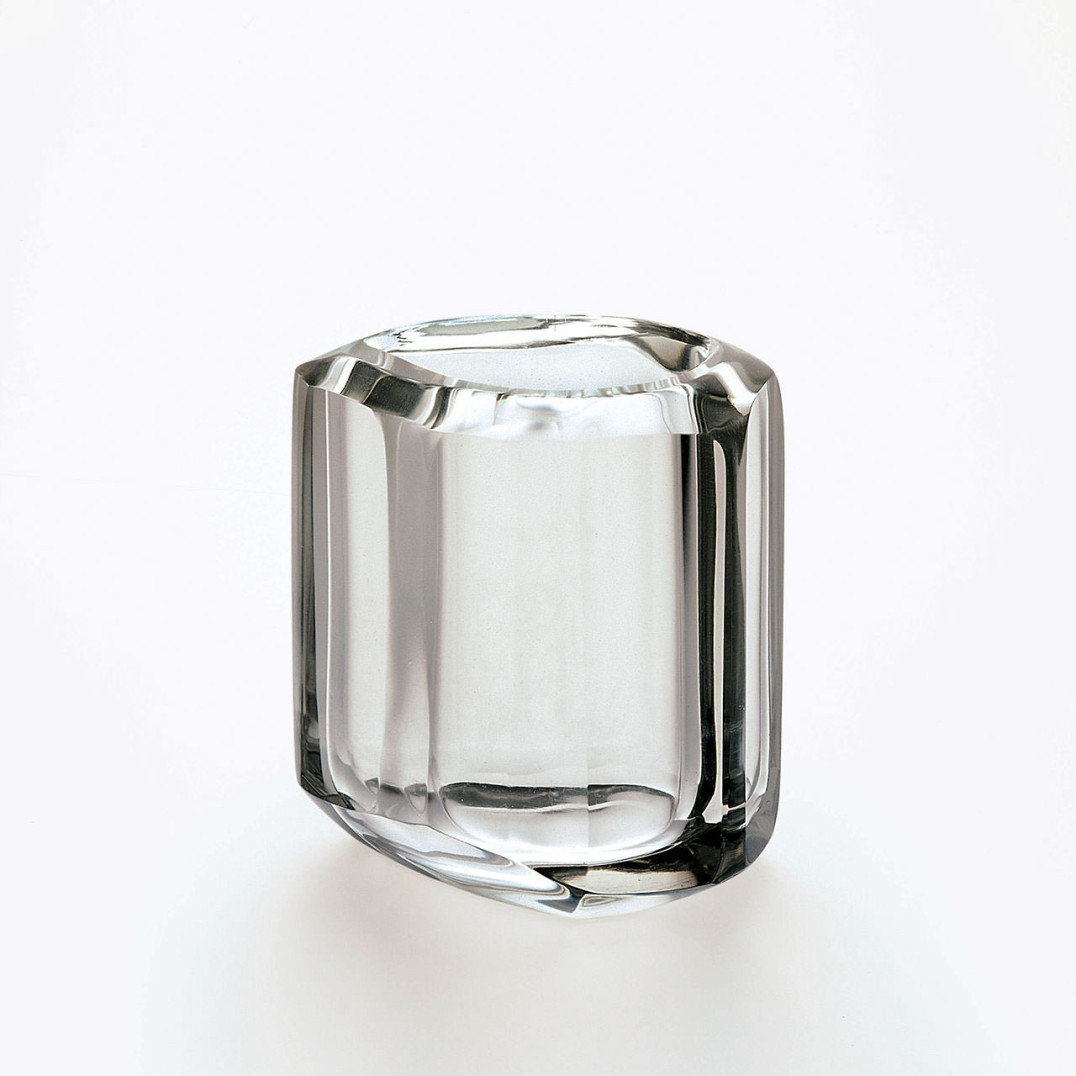
Thomas StearnsReliquiario del Doge, 1962
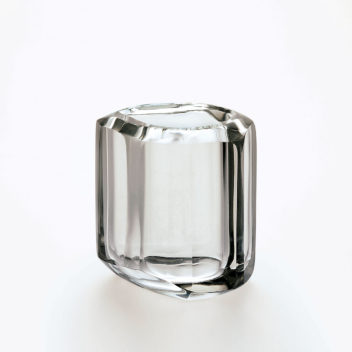
Thomas StearnsReliquiario del DogeVenini & C., 1962
Reliquary for the Doge. Vessel in heavy transparent cristallo glass.
A prototype never produced.
Engraved: Stearns 62.
6 1/4 in. high (15.9 cm)

Thomas Stearns 1936–2006
Thomas Stearns was born in the United States on September 4, 1936, in Oklahoma City. From 1955 to 1957, he left his hometown to study painting at the Memphis Academy of Art. Between 1957 and 1959 he attended the prestigious Cranbrook Academy of Art and received a postgraduate Fulbright Travel Grant for Italy. He was 24 years old when he arrived at Venini. He started working after Christmas 1959 and stayed with the firm all of 1960 as well as 1961. He left Venice at the end of November 1962, and shortly thereafter the Victoria & Albert Museum in London ordered a group of his works produced by Venini. In 1964, he had his first exhibition of sculpture at the Willard Gallery in New York. In 1965, he was awarded a Guggenheim Fellowship for Sculpture and a grant from the National Institute of Arts and Letters. In 1968, he had a one-man show called Constructions at the Ringling Museum of Art in Sarasota, Florida. In 1970, Stearns began teaching at the University of the Arts, Philadelphia, where he was an associate professor in the sculpture department.

Venini & C. 1932–2001
In 1932, when both Martinuzzi and Zecchin left the company, Paolo Venini changed the name from Vetri Soffiati Muranesi Venini & Co. (V.S.M. Venini & Co.) to Venini & C.. Milanese architect Tommaso Buzzi became the new artistic director. After 1934, artistic direction was taken on by Carlo Scarpa, who designed most of the company's production through 1947. Side by side with Venini, who often intervened personally in design, Scarpa created numerous collections of objects characterized by refined colors. After World War II, Venini & C. sought numerous collaborations with artists such as architect Giò Ponti and the Swedish-born Tyra Lundgren. After 1948, Fulvio Bianconi, Massimo Vignelli, and Tobia Scarpa contributed significantly to the new direction of the company. Paolo Venini died in 1959 and his son-in-law, Ludovico Diaz de Santillana, took over the management of Venini & C. He not only worked personally as a glass designer but also continued the collaboration started by Paolo Venini with various artists and designers. Starting in 1960, many other designers collaborated with the company, like Thomas Stearns, Toni Zuccheri, Tapio Wirkkala, Laura and Alessandro Diaz de Santillana, James Carpenter, Dan Dailey, Richard Marquis, Benjamin Moore, and Toots Zynsky. In 1986, the de Santillana family left the company, selling their stock to the Ferruzzi group, which guaranteed the fine quality Venini was known for by hiring new designers such as Timo Sarpaneva, Marco Zanini, Ettore Sottsass Jr., Alessandro Mendini, Mario Bellini, Barbara del Vicario, and others. In 1988, Venini was acquired by Royal Scandinavian. Since 2001, Venini S.p.A. has been part of Italian Luxury Industries Group and is led by Giancarlo Chimento, Giuliano Tabacchi, and Giorgio Rizzo.
Thomas StearnsReliquiario del Doge, 1962
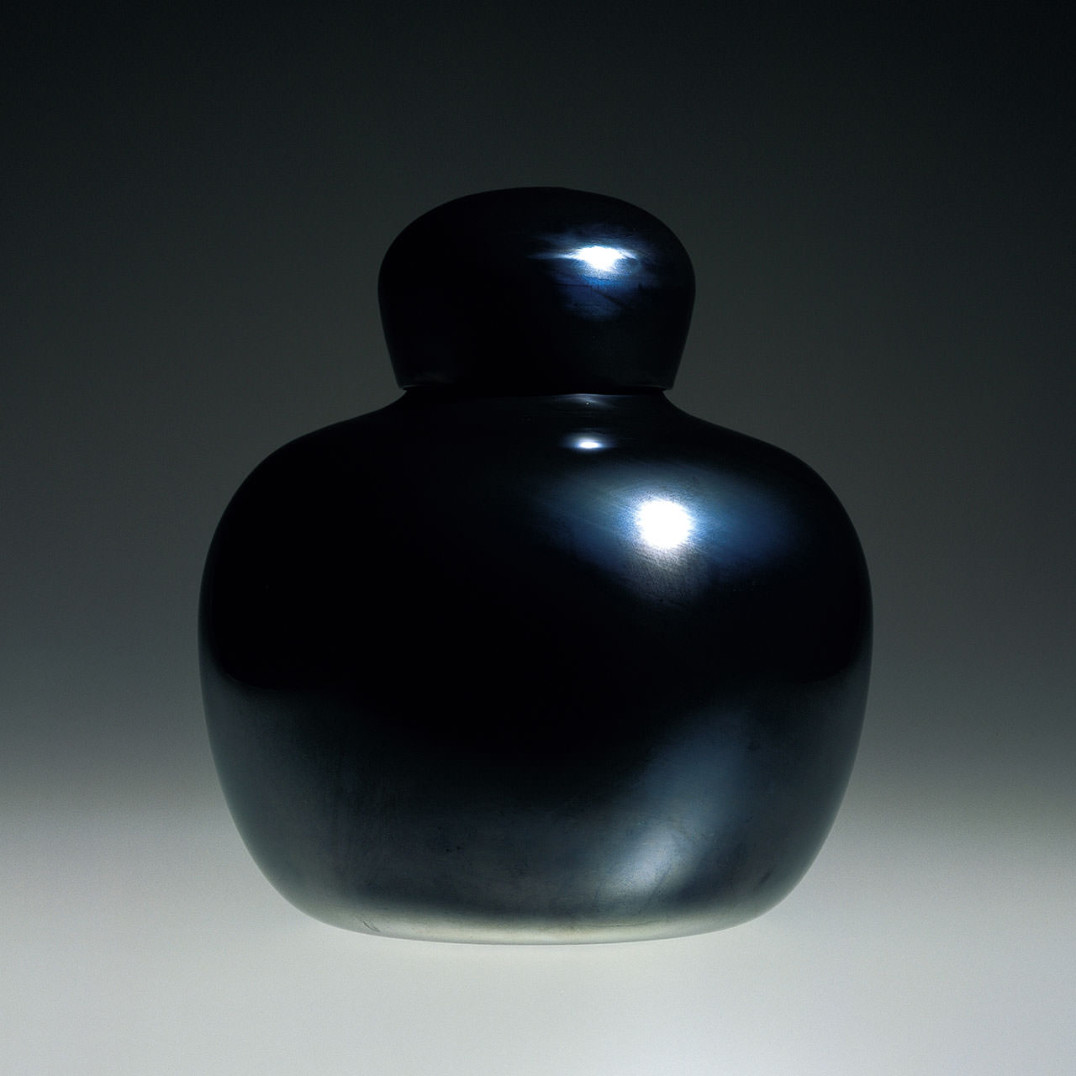
Tobia ScarpaCinese, ca. 1960

Tobia ScarpaCineseVenini & C., ca. 1960
An anthracite black Chinese
ginger jar shaped vessel with a matching lid. The entire vessel is heavily iridized.
Acid stamped:
venini murano ITALIA.
10 1/8 in. high (25.6 cm)
Exhibitions:
2000, New York, Venetian Glass, Museum of Arts & Design;
2001, Milan, Murano: Vetri dalla Collezione Olnick Spanu, Spazio Oberdan.
Bibliography and comparative texts:
Venini, grey catalogue, n. 8555;
Olnick Spanu, 2000, n. 138;
Olnick Spanu, 2001, n. 173.

Tobia Scarpa 1935–
Tobia Scarpa, son of Carlo Scarpa, was born in Venice, where he graduated from the Istituto Universitario di Architettura di Venezia. In 1958, he was invited by Paolo Venini to collaborate in the furnace, following in the footsteps of his father, who had worked with Venini during the '30s and '40s. Tobia Scarpa designed new collections for Venini even after the death of its founder, creating refined blown glass pieces exemplified by the essential quality of their design. The most successful vessels were his large Battuti vessels, the Occhi and Murrine series, for which he reinterpreted ancient Roman glass techniques. As an architect and designer, together with his wife, Afra, he has collaborated with many companies—Cassina, B & B Italia, Flos, Molteni & C., to name a few—in creating works that belong to the best tradition of Italian design. During the '80s, he and his wife designed several glass collections for VeArt.

Venini & C. 1932–2001
In 1932, when both Martinuzzi and Zecchin left the company, Paolo Venini changed the name from Vetri Soffiati Muranesi Venini & Co. (V.S.M. Venini & Co.) to Venini & C.. Milanese architect Tommaso Buzzi became the new artistic director. After 1934, artistic direction was taken on by Carlo Scarpa, who designed most of the company's production through 1947. Side by side with Venini, who often intervened personally in design, Scarpa created numerous collections of objects characterized by refined colors. After World War II, Venini & C. sought numerous collaborations with artists such as architect Giò Ponti and the Swedish-born Tyra Lundgren. After 1948, Fulvio Bianconi, Massimo Vignelli, and Tobia Scarpa contributed significantly to the new direction of the company. Paolo Venini died in 1959 and his son-in-law, Ludovico Diaz de Santillana, took over the management of Venini & C. He not only worked personally as a glass designer but also continued the collaboration started by Paolo Venini with various artists and designers. Starting in 1960, many other designers collaborated with the company, like Thomas Stearns, Toni Zuccheri, Tapio Wirkkala, Laura and Alessandro Diaz de Santillana, James Carpenter, Dan Dailey, Richard Marquis, Benjamin Moore, and Toots Zynsky. In 1986, the de Santillana family left the company, selling their stock to the Ferruzzi group, which guaranteed the fine quality Venini was known for by hiring new designers such as Timo Sarpaneva, Marco Zanini, Ettore Sottsass Jr., Alessandro Mendini, Mario Bellini, Barbara del Vicario, and others. In 1988, Venini was acquired by Royal Scandinavian. Since 2001, Venini S.p.A. has been part of Italian Luxury Industries Group and is led by Giancarlo Chimento, Giuliano Tabacchi, and Giorgio Rizzo.